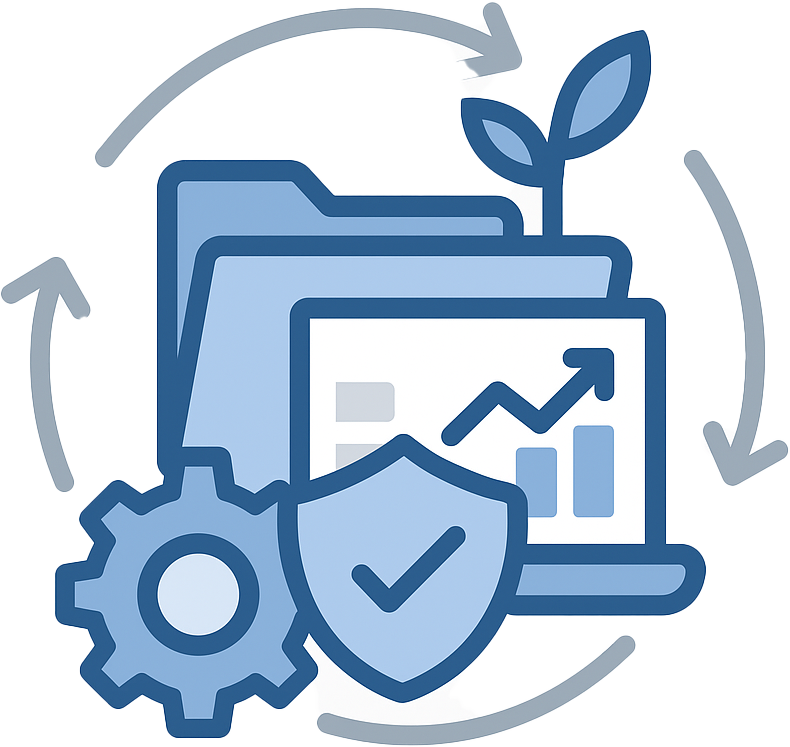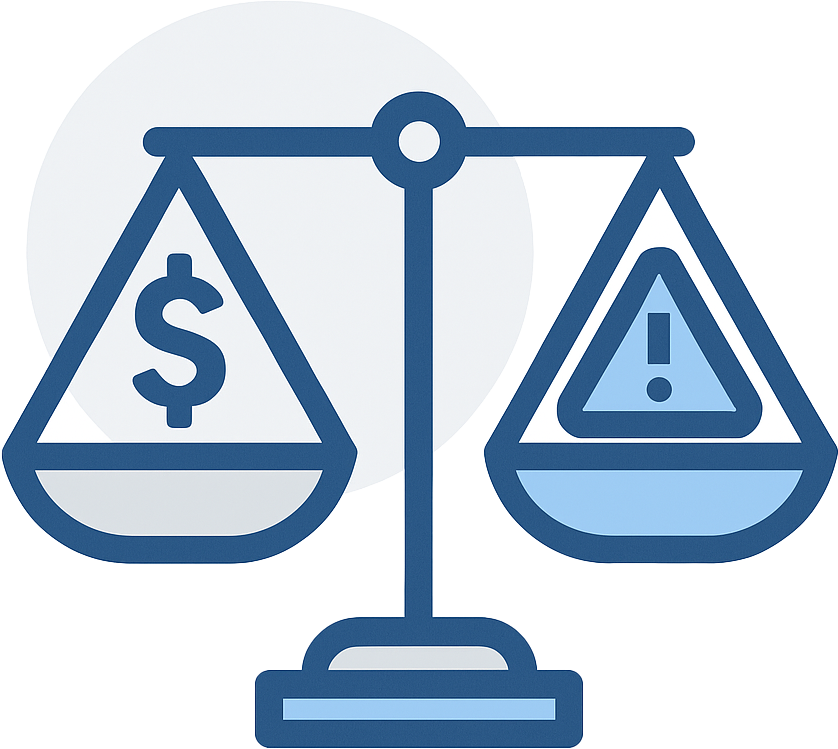Learn what benchmarks and limits mean for stormwater testing & permit compliance.
No one likes to be told what they can and cannot do, but there are limits to everything. Stormwater regulations are no different. The Federal government & individual states have guidelines on what industrial and commercial operations can and can’t release via stormwater runoff.
Specifically, they set benchmarks and limits with regards to stormwater samples, with the end goal of helping to protect water quality.
However, many stormwater permits are difficult to read & understand, so figuring out what the difference between the two are can be challenging to say the least.
In this quick read, we'll break down the difference between benchmarks and limits, how they can affect your business, and how to stay out of trouble when it comes to them.
Stormwater Permit Basics
Before we dive into the difference between limits and benchmarks, let's spend a quick minute reviewing some of the basics regarding stormwater permits. If you already know this stuff, fantastic! If not, check out some of these links to learn more about stormwater permits.

Stormwater Sample Benchmarks vs Limits
NPDES permits (often called stormwater permits) almost always require you to collect a sample of your facility's stormwater discharges, send the sample off to the lab for analysis, and report your results to your regulatory agency. In order to know whether or not these samples are good or bad, the results will need to be compared to what is considered "okay" and "not okay" for the environment.
Here is where the need for benchmarks and limits comes in.
Both benchmarks and limits are series of numbers that specify exactly how much is too much of the pollutants you release in your stormwater discharges. Each time you report sample results, they'll be checked against these benchmark or limit values to assess whether your discharges are "too polluted" or not.
However, while benchmarks and limits essentially have the same purpose, they are very different in terms of what they mean!
What are benchmarks in a stormwater sample?
Benchmarks are used to assess for your discharges, however, exceeding them is not technically a violation of your permit. These figures are more like "guidelines" that you should strive to stay under.
Benchmarks give guidance that helps you maintain good water quality in receiving waters - if you don't stay under/at the benchmark, chances are you won’t get in a lot of trouble because of it. However, depending on your permit, exceeding benchmarks may mean that you'll need to notify your regulatory agency, take samples more frequently, perform inspections to identify the causes, document the exceedance in your SWPPP, and so on.
So to be perfectly clear, the consequences of exceeding benchmarks really depend on the language of your specific permit. In some permits there may be no consequence, in others, there may be lots of additional requirements to deal with.
It's crucial to understand YOUR particular permit and what it says about the exceedances of benchmarks.
What are the limits in a stormwater sample?
Limits (or limitations), on the other hand, are very strict. If a pollutant exceeds the limit value, it is considered a violation of your permit. Definitely not a good thing.
Exceeding a limit is a serious matter - you'll almost certainly get in trouble with your environmental regulatory agency. This can range from monetary fines to enforcement action, to termination of your permit, to, in severe cases, shutting down your operation (either temporarily, or permanently, in very extreme situations).
The key with limits is to stay under them, period, end of the story. The repercussions of going over your limits can range in severity, but for certain, they mean one thing: more headaches.
How can I keep my stormwater samples under my benchmarks and limits?
The best way is to be proactive by taking measures, such as using BMPs (best management practices) that will keep stormwater from picking up pollutants too many in the first place. Common stormwater BMPs include things like:
- Regular sweeping of your facility's ground to reduce dirt, dust, and other solids.
- Install various types of filters on drains that remove debris and particulates before it enters water bodies.
- Having drainage ponds and basins to store water runoff before it enters a waterbody, allowing pollutants to “sink” and settle out of the water.
- Promptly cleaning any spilled materials or chemicals.
- Keeping stockpiles or stored items under cover or indoors, away from stormwater.
- And many more!
These are just a few examples to get you started! There are plenty more to choose from that will surely improve the quality of your stormwater discharges. We take a deeper dive into stormwater BMPs in our article called What are the best stormwater BMPs?

Stay ahead of your stormwater monitoring results!
Additionally, make sure that you're monitoring your stormwater monitoring results! These might just look like a bunch of random numbers, but they do paint a picture of the water quality at your facility. If you’re exceeding a benchmark or a limit, find out why. Is it from a random issue on-site? Is it from something that needs to be cleaned up or addressed properly?
After all, to make the best decisions, you need to have information about what's happening in your facility. We recommend some facilities keep a spreadsheet of your stormwater data and compare it to your benchmarks and limits. Are you getting anywhere close to them? If so, what pollutants are contributing the most to this? Where are they coming from?
Once you identify these pollutants and their sources, focus on reducing and fixing them! Being proactive is critical to your success in controlling stormwater quality, which is vital to staying in compliance with your stormwater permit.
So again, the difference is:
- Benchmarks are "guidelines" that say, "you shouldn't go over this amount” and doing so may or may not end up making your life harder.
- Limits are thresholds that say, "if you go over this amount, it's a violation", and almost certainly will make your life harder.
Think of it this way - benchmarks tell you when your samples are "not normal", but limits tell you when your samples are "not okay". Benchmarks and limits are incredibly important for stormwater permit holders to understand. While they can both mean regulatory repercussions for your business, they're also crucial to keeping our environment clean and healthy.
And again, each permit handles benchmarks and limits, as well as the consequences of exceeding them, a little differently. Make sure to read through your permit to understand exactly how benchmarks and limits will affect you!

Additional Stormwater Permit Information
Stormwater permits can be a challenging thing to understand. If you're overwhelmed, you're not alone. RMA has been actively involved in helping companies get and stay in compliance with stormwater permits since our founding in 1992. Long story short, we know the ins and outs of the environmental problems facilities face and can help you get into compliance with applicable environmental laws and regulations, ensuring your business stays out of trouble and in compliance.
Our staff members have been on-site at thousands of commercial and industrial operations across the country, so when we say we've seen it all and done it all, we mean it. We've helped everyone, from globe-spanning, multi-national organizations to small "mom & pop" operations. No matter your size, industry, or location, we'd love to learn how we can help.
If you're having any type of stormwater permit issue at your operation and need the help of an environmental consulting firm with a proven track record, reach out. Even if we can't help, we’ll do our best to steer you in the right direction. Feel free to contact us at info@rmagreen.com, click here to contact us, or give us a call anytime at 888-RMA-0230 to learn how we can help your operation deal with environmental regulations.















